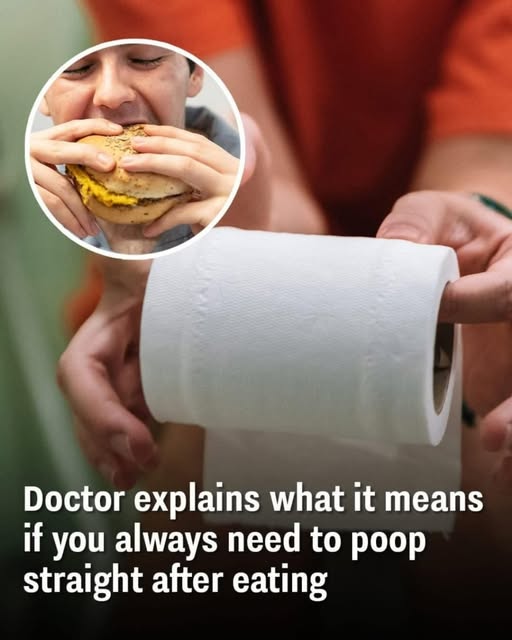ADVERTISEMENT
Why You Might Feel the Urge to Poop Immediately After Eating
Have you ever sat down for a meal, only to suddenly feel the urge to run to the bathroom right after eating? If so, you’re not alone! Many people experience this phenomenon, known as the “gastrocolic reflex.” While it might seem a bit awkward, it’s a completely natural bodily response that occurs when you eat. But what exactly is behind this feeling, and why does it happen? Let’s break it down.
What is the Gastrocolic Reflex?
The gastrocolic reflex is a normal physiological response that happens when food enters the stomach and triggers activity in the colon. In simple terms, it’s a reflex that stimulates your bowels to make room for the food you’ve just consumed. The idea is that when your stomach stretches as food enters, your digestive system is triggered to begin the process of digestion and elimination simultaneously.
This reflex is particularly noticeable after eating larger meals or certain types of foods, but it can vary from person to person. It’s your body’s way of preparing to process the food you’ve just eaten and making sure there’s enough space for the new meal to be processed.
Why Does This Happen?
- Stomach Stretching
When you eat, your stomach expands to accommodate the food. This stretching sends signals through the nervous system to the colon, signaling that it needs to start working on expelling waste. Essentially, your body wants to “clear out” space to make room for the new food. This is why you might feel the need to visit the bathroom right after eating. - Hormonal Influence
Eating stimulates the release of various digestive hormones, including gastrin and cholecystokinin (CCK). These hormones help with digestion but can also affect the colon, speeding up motility and promoting bowel movements. - Type of Food Consumed
The type of food you eat can also affect the urgency of the gastrocolic reflex. High-fat, spicy, or very rich foods may trigger this reflex more quickly and intensely, causing you to feel the need to use the restroom soon after eating. Fiber-rich foods like fruits, vegetables, and whole grains can also stimulate the digestive system and contribute to the urge to go. - Morning Reflex
For some people, this reflex is strongest in the morning, especially after breakfast. This is because your colon has been resting overnight, and the arrival of food can stimulate peristalsis—the wave-like contractions in your colon that push food along. This is why you might experience an urge to poop shortly after breakfast, especially if you’ve had a hearty meal.
Other Factors That May Contribute
- Stress and Anxiety
It’s not just the food that can trigger the urge to poop. For people who are anxious or stressed, the body’s “fight or flight” response can accelerate digestion, which may cause a bowel movement soon after eating. In this case, the gastrocolic reflex may be heightened due to emotional factors. - Food Sensitivities or Digestive Conditions
If you have food sensitivities (like lactose intolerance) or digestive conditions such as irritable bowel syndrome (IBS), you may experience stronger or more frequent urges to go after eating. Certain foods can irritate the stomach and intestines, leading to faster digestion and more urgency in your need to use the bathroom.
Is This Normal?
In most cases, the urge to poop after eating is completely normal and nothing to worry about. It’s just your body’s natural digestive process in action. However, if you notice that it’s happening frequently or with significant discomfort, it may be worth exploring further. If the urgency feels excessive, or if it’s accompanied by other symptoms like diarrhea, bloating, or stomach cramps, you might want to consult a doctor to rule out underlying issues like IBS, food sensitivities, or infections.
When to Seek Help
Although the gastrocolic reflex is a normal response, there are certain signs when you might want to reach out to a healthcare professional:
For Complete Cooking STEPS Please Head On Over To Next
